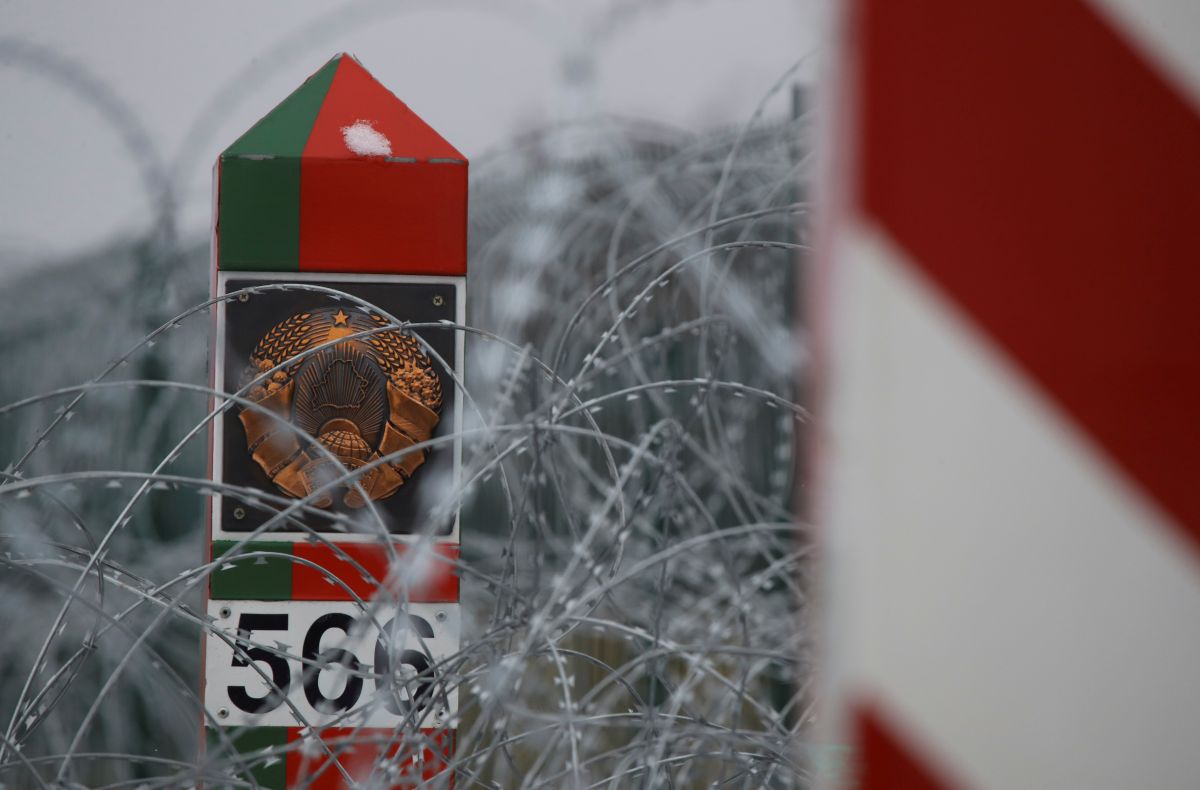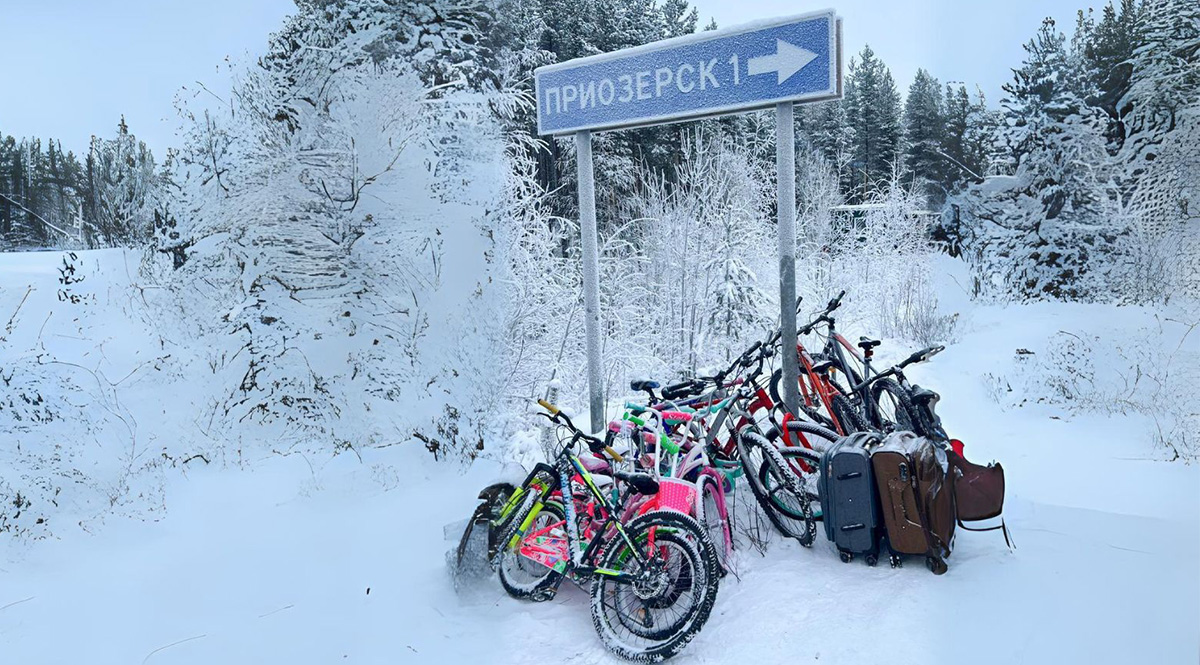EU and NATO States Investing in Protection of Borders with Russia and Belarus
The ongoing migration crisis on the borders of Poland, Lithuania, and Latvia with Belarus since spring 2021, and on Finland’s border with Russia since late 2023, is part of a hybrid operation by the Belarusian and Russian security services against NATO and the EU. In order to effectively protect the external border and stop irregular migration, countries neighbouring Belarus and Russia are building barriers and implementing updated internal regulations. Countries responsible for the external borders of the EU and NATO should exchange their experience and jointly seek financial support from both organisations.
(1).png) Kacper Pempel / Reuters / Forum
Kacper Pempel / Reuters / Forum
Since the beginning of the year, Poland has seen a significant increase in attempted irregular border crossings from Belarus—an average of 100 per day, with almost 600 at the peak of the crisis in October 2021. This peaked in the run-up to the European Parliament elections, with more than 7,100 attempts in May. Belarus and Russia use migrants in hybrid operations aimed at deepening social polarisation, as well as to concentrate the forces and resources (police and military) necessary to ensure the security and integrity of the external borders of the EU and NATO, while also probing the procedures, response times, and modus operandi. In addition to these states’ instrumentalisation of migration, such actions are accompanied by disinformation campaigns, psychological operations, as well as physical attacks on infrastructure and personnel protecting the border—since the beginning of the crisis, one Polish soldier has been killed and more than 60 injured in altercations with migrants. Destabilisation of the border can also be used by Belarus and Russia in various provocations (including armed ones), escalation of tensions, and/or the deployment of subversive groups to carry out sabotage attacks on critical infrastructure. In response, the Baltic States, Poland, and Finland are strengthening border protection, adjusting laws, and building engineered barriers. In addition to deterring those who cross the state border irregularly, this infrastructure is intended to increase the defence capabilities of the countries of the Alliance’s Northeastern Flank in a situation of armed aggression on their territory and to increase its cost to the aggressor.
From a Fence to the Baltic Defence Line
The Lithuanian and Latvian authorities see Belarusian-orchestrated migration as a serious security threat. Already at the beginning of the crisis, in 2021, these two states deployed the military and police to support the border guards and empowered them to turn back irregular border crossers. They requested support from the EU’s Frontex agency and NATO’s Counter Hybrid Support Teams (CHSTs). Both countries temporarily imposed states of emergency in their border areas, implemented restrictive asylum policies, such as limiting the acceptance of refugee claims to official border crossings. These measures were intended to discourage migrants from attempting to enter the EU through irregular means. To make this more difficult, a makeshift fence was first erected at the border, then extended and reinforced. Estonia has not been subjected to direct migration pressure from Russia, but fearing an experience similar to that of Poland, Lithuania, and Latvia, it has already taken measures to increase border protection and in 2022 started building a functional barrier along the entire 340 km land border with Russia.
The risk of escalation in the Baltic region through hybrid or armed action has contributed to increased cooperation between Lithuania, Latvia, and Estonia and the announcement on 19 January of this year of a plan to create the Baltic Defence Line. The project includes the construction of a security and fortification system on the border with Russia and Belarus. It is intended not only to counter irregular migration, but above all to increase the defence capabilities of the Baltic States in the event of armed aggression, which is particularly important given the lack of so-called strategic depth, that is, the distance between the potential frontline and logistical facilities and infrastructure providing protection for civilians. The defence line will consist, among other things, of monitoring and detection systems, elements that impede military mobility (e.g., anti-tank ditches), bunkers and warehouses where mines will be kept, anti-tank barriers (“hedgehogs” and “dragon's teeth”) that can be quickly deployed when needed.
Poland’s “Shield East”
Poland has enacted similar measures, as it has been the main target of Belarus’ hybrid migration operations since autumn 2021. It has engaged in protecting the border about 8,000 soldiers, who support the Polish Border Guard as part of Operation Safe Podlasie, together with the police. In mid-June this year, the Polish authorities introduced what they call a buffer zone in the border regions in which unauthorised persons are banned. It covers a strip 200 metres to 2 km wide and 60 km long along the border with Belarus. These measures have led to a 70% decrease in the number of irregular crossings.
On a 190-kilometre stretch of the Polish-Belarusian border (out of a total of 418 km), a 5.5-metre barrier was built in mid-2022 to make it more difficult for migrants to cross there. However, this barrier was not fully effected, as exemplified by migrants using car jacks to destroy the spans in order to cross the border. As a result, the Polish authorities took measures to strengthen the barrier and install additional detection systems in the border area. These efforts are part of the “Shield East” programme, the largest infrastructure project aimed at strengthening Poland’s defence capabilities and deterrence by denial against aggression from Russia and Belarus. In addition to impeding the mobility of enemy forces, it is also intended to ensure the free movement of Polish troops and the protection of civilians. It will consist of intelligence, surveillance, and reconnaissance (ISR) systems, forward operating bases, logistics nodes, and anti-drone systems. “Shield East” is expected to be fully in place by the end of 2028 and its total cost is estimated at nearly €2.5 billion. In mid-October this year, the Polish government also adopted a migration strategy to make it more difficult for irregular border crossers to abuse Belarus’ and Russia’s asylum application laws.
Norway Follows in Finland’s Footsteps
At the end of 2023, in response to the launch of an artificial migration route by the Russian Federal Security Service (FSB), Finland closed all border crossings with Russia. The possibility to apply for international protection was also restricted to airports and water crossings. These decisions stemmed, among other things, from concerns about the inefficiency of Finland’s migrant reception system, which can only accommodate around 4,000 people in centres. Like the Baltic States and Poland, Finland has decided to build a barrier on selected sections of its border with Russia. The fence will be built in sections totalling 200 km along the Finnish-Russian border, which is as long as 1,343 km. This barrier will be equipped with a monitoring system to be located mainly near border crossings. This is primarily to enhance the ability of the Finnish border police to detect at an early stage migrants trying to cross the border irregularly. Currently, the Finnish authorities have no plans to implement major infrastructure projects of a defence nature. A similar solution is being considered by Norway, which has so far not struggled with migration pressure from Russia but sees such measures as an important element in preventing a potential crisis. The 198-kilometre Norwegian-Russian border is located above the Arctic Circle, where only one border crossing, at Storskog, operates in harsh Arctic conditions. Although the Norwegian authorities have recently decided to increase the number of border guard personnel, the construction of a fence equipped with a monitoring system will increase situational awareness and reduce their response time.
Conclusions and Perspectives
Due to the sensitivity and emotions evoked by the instrumentalisation of irregular migration in the public debate, it is, from the perspective of Russia and Belarus, a useful hybrid tool for influence on the internal political processes of EU and NATO states. Belarus and Russia deliberately manage the dynamics of the crisis in such a way as to deepen social polarisation, especially in periods preceding elections, as exemplified by the escalation of the situation on the Polish-Belarusian border before the European Parliament elections in June this year. It should be assumed that such a scenario will be repeated and escalated for subsequent elections, which is why the EU and NATO countries bordering Belarus and Russia should implement adequate legal measures and strengthen physical border protection in order to effectively counter irregular migration.
Destabilisation of the border can also be used for provocations of a hybrid nature (e.g., acts of sabotage) or of a military nature (especially during the Russian-Belarusian Zapad manoeuvres). Poland, the Baltic States, Finland, and Norway should strengthen cooperation in the area of protecting the external border of the EU and NATO in view of both the problem of irregular migration and infrastructure projects enhancing defence and deterrence capabilities on the Alliance’s Northeastern Flank. Addressing both together, they can also push for these investments to receive financial support from EU funds, such as the Integrated Border Management Fund, and NATO, for example, by including them in the NATO Security Investment Program (NSIP).




_s.jpg)
